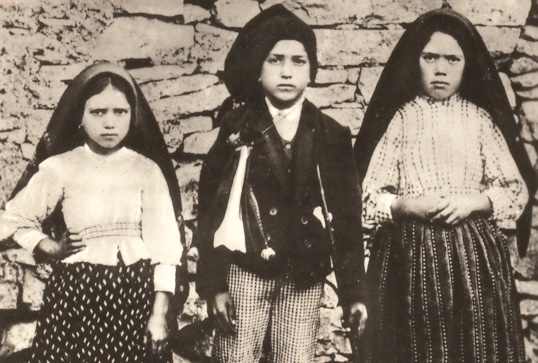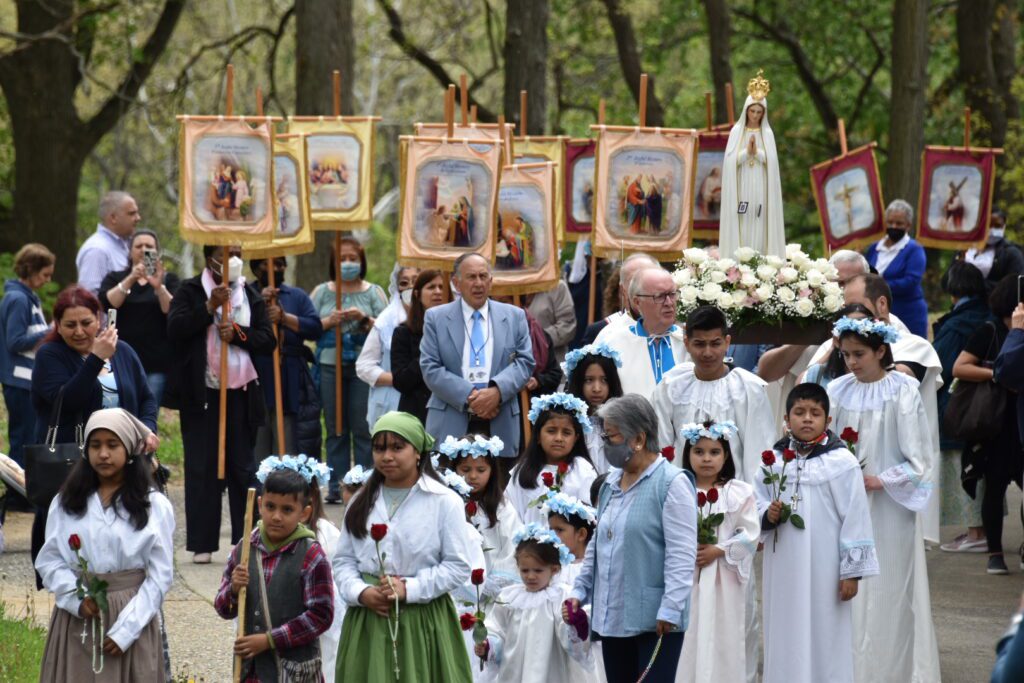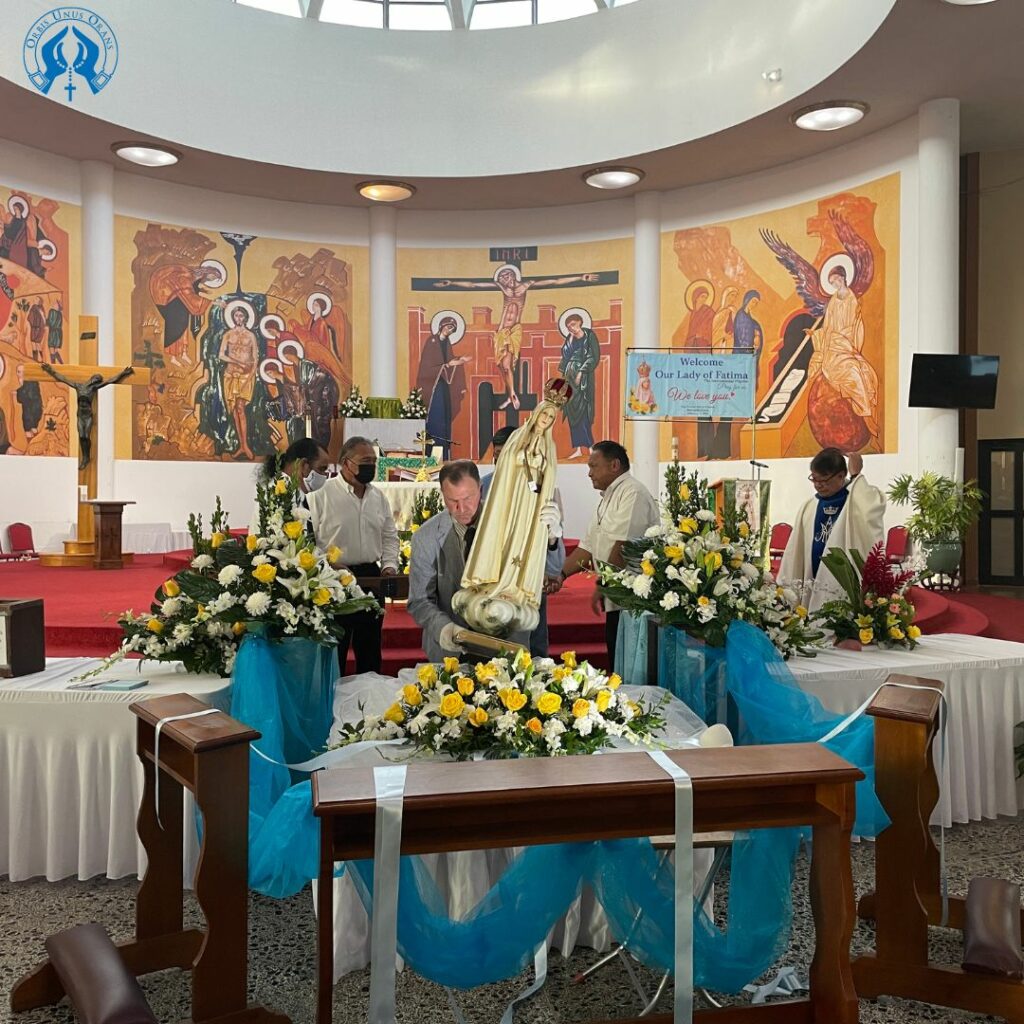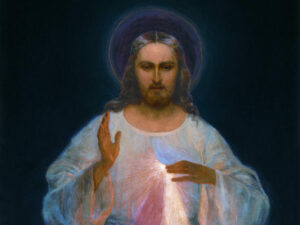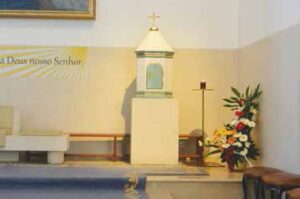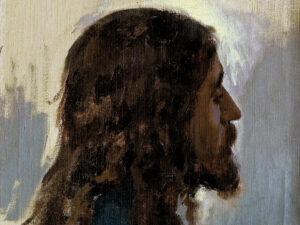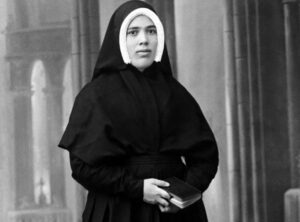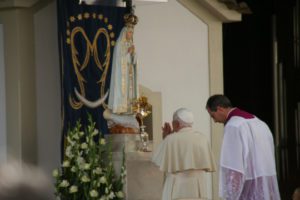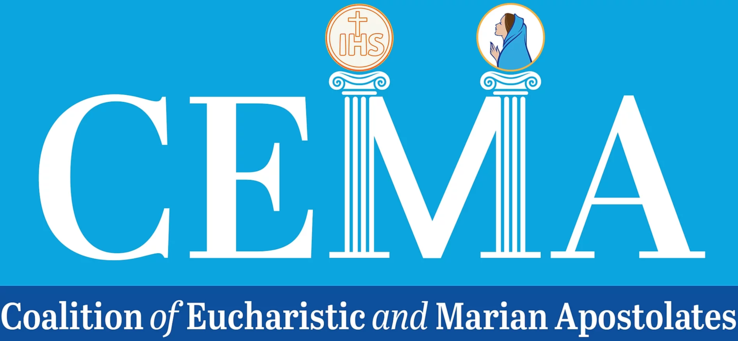by Rev. Matthew R. Mauriello –

On August 6, we commemorate the 800th anniversary of the passing into heavenly glory one of the Church’s greatest saints, in 1221. St. Dominic Guzman was born in Calaruega, Spain, on August 8, 1170. His father was Felix Guzman and his mother was Blessed Jane of Aza. According to his biographer, Blessed Jordan of Saxony (1190-1237), who succeeded St. Dominic as minister general of his Order, his mother was unable to have a child and went to the shrine of St. Dominic of Silos to ask his intercession.
The name Dominic means the “hound of the Lord;” Domini canus in Latin. When his mother was pregnant with him, she had a dream of a dog with a torch in its mouth, which signified the dog as ‘hounding” others to see the Light of Christ in darkness. At his baptism, his godmother saw a shining star on his forehead and this is often depicted in portrayals of him.
In 1184, at the age of 14, he studied in Palencia, Spain, and in 1194, was ordained to the Holy Priesthood. He served as a Canon of the Cathedral in Osma under the guidance of Bishop Diego de Avezedo. At that time, there was the Albigensian heresy and he worked diligently with his bishop to educate the faithful to its errors. At his bishop’s suggestion, he was sent to preach at Languedoc, in France, and there helped to reform the Cistercians. Subsequently, in 1206, he founded an order of sisters at Proulle to combat this heresy, which received the blessing of Pope Innocent III (r. 1198-1216)
The papal legate, Peter of Castlenau was murdered by the Albigensians in 1208 and Pope Innocent III launched a crusade against them, which was headed by Count Simon IV Montfort for seven years. In 1214, this same count gave St. Dominic a castle at Casseneuil, also in France, and there he joined with six priests and founded the Order of Preachers to combat this heresy. After his death, this order has been called the “Dominicans,” but officially it is still the Order of Preachers. In 1216, this Order was approved by Pope Honorious III (r. 1216- 1226).
According to the Dominican tradition, the Blessed Virgin Mary entrusted the Holy Rosary to him at Proulle in 1206 to help him with this spiritual tool in his efforts to convert the Albigensians. The development of this devotion actually owes much to the followers of St. Dominic, especially the 15th century preacher, Blessed Alanus de Rupe (1428-1475).
His order was very successful in the preaching of its members against this heresy, which was combined with charitable works by its members. In 1219, St. Dominic and his companions were invited by Pope Honorius III to reside and minister at the ancient Roman Basilica of Santa Sabina. Previously, they had a temporary residence in Rome at the convent of San Sisto Vecchio, which would be transformed in the 16th century into the College of Saint Thomas, and then in the 20th century, into the Pontifical University of Saint Thomas Aquinas, called the “Angelicum.”
According to his biographer, Guiraud, St. Dominic “abstained from meat, observed fasts and periods of silence, selected the worst accommodations and never allowed himself the luxury of a bed. He also wrote that St. Dominic frequently traveled barefoot and that rain and other discomforts elicited from his lips nothing but praises to God.”
St. Dominic spent the last years of his life organizing his new religious order and went throughout Italy, France, Spain and Hungary to establish various provinces and was present in 1220 invoking the first General Council of the Order of Preachers at Bologna, Italy. According to his biographers, he was at the Convent of St. Nicholas at Bologna and was weary and sick with a fever. St. Dominic asked the monks to lay him on some sacking stretched upon the ground and the brief time that remained to him was spent in exhorting his followers “to have charity, to guard their humility, and to make their treasure out of poverty.” He died at age 51, at noon on August 6, 1221.
Cecilia Cesarini, who was received by St. Dominic into his new order, described him as “thin and of middle height. His face was handsome and somewhat fair and he had reddish hair and beard and beautiful eyes. His hands were long and fine and his voice pleasingly resonant. He never got bald, though he wore the full tonsure, which was mingled with a few grey hairs.”
Pope Gregory IX (r.1227-1241) canonized him in 1234 and his feast day is celebrated by the universal church every year on August 8. Among his symbols is a dog carrying a torch in its mouth. As well, he is depicted carrying a book and a lily to represent his purity with a star on his forehead. Both the Island of Dominica and the Dominican Republic honor him and the capital of the latter, Santo Domingo, also bears his name. May St. Dominic always aid us in our earthly pilgrimage to follow Christ’s Light to help to light our own path to heaven.
Father Matthew Mauriello is an author, a columnist for Soul Magazine and a regular speaker at the National Blue Army Shrine of Our Lady of Fatima.


